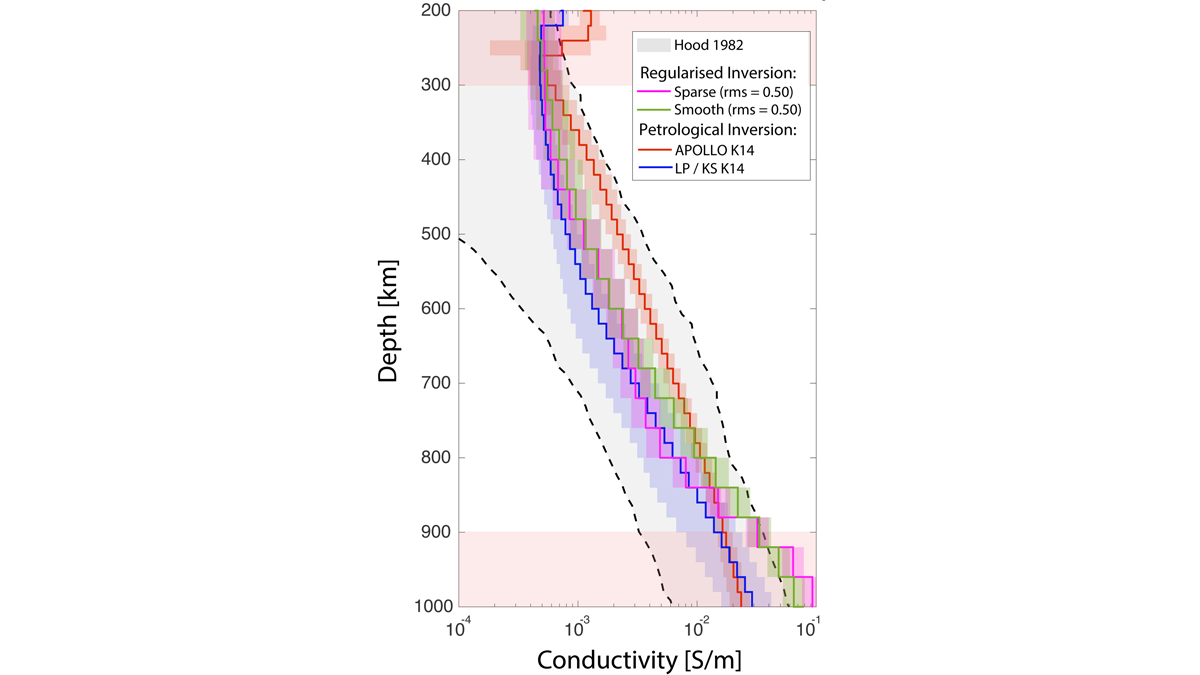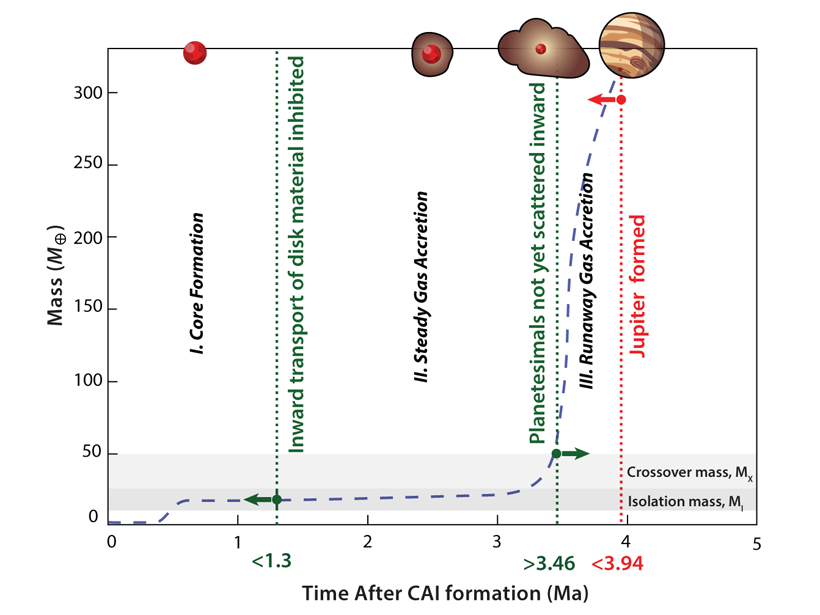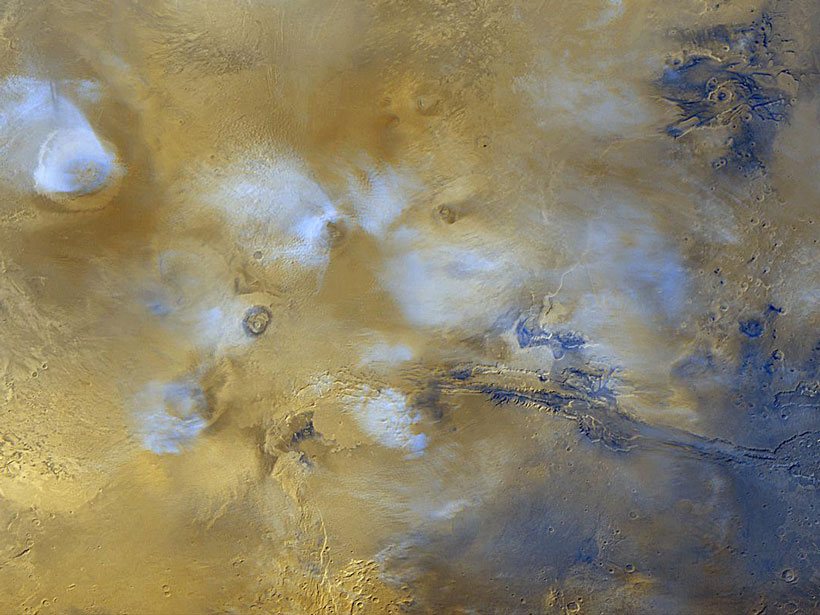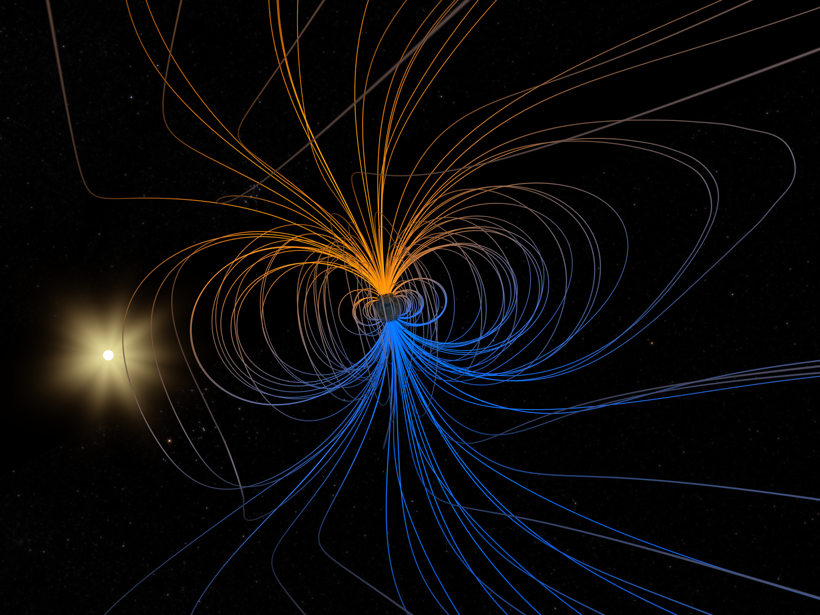There’s a seismometer on Mars, and it’s been busy! Download our free illustrated poster.
planetary interiors
A Better Look at the Moon’s Middle Mantle
A new analysis strategy sheds new light on the electrical conductivity of the lunar mantle between 300 and 900 km depth.
Fingerprints of Jupiter Formation
Meteorite isotopes, meteorite paleomagnetics, and planet formation models collectively show Jupiter formation via first slow then fast collection of material by core accretion in <5 million years.
Tiny Volcanoes Are a Big Deal on Mars
Cinder cones and fissure vents provide clues about the evolution of the Red Planet’s mantle and crust.
Saturn’s Dynamo Illuminates its Interior
Saturn’s oddly symmetrical magnetic field can be explained by models in which the active dynamo region is overlain by a thick, stable layer cooled more strongly at the poles.
How Not to Homogenize a Planet
Even the strong heating from short-lived aluminium-26 (26Al) would not be able to homogenize the interior of a Mars‐sized planetary embryo.
Superlasers Shed Light on Super-Earth Mantles
By compressing iron oxide to pressures expected inside a large and rocky exoplanet, scientists discovered that such mantles could layer, mix, and flow in ways very different from those inside our planet.
Moon’s Largest Crater Holds Clues About Early Lunar Mantle
An ancient impact splashed evidence of the Moon’s early mantle makeup onto its surface. Now researchers are piecing together models, maps, and samples to bring these mysteries to light.
What Happened When the Lithosphere of Venus Broke?
Although Venus does not have plate tectonics today, previous episodes of intense tectonic activity could have resulted in a distribution of crustal thickness and age resembling the plate we see today.
The Wobbly Anomaly and Other Magnetic Weirdness
From the connection between Earth’s core and life on the surface, way out to the ends of the solar system, this month’s issue of Eos takes a look at the study of magnetic fields.










